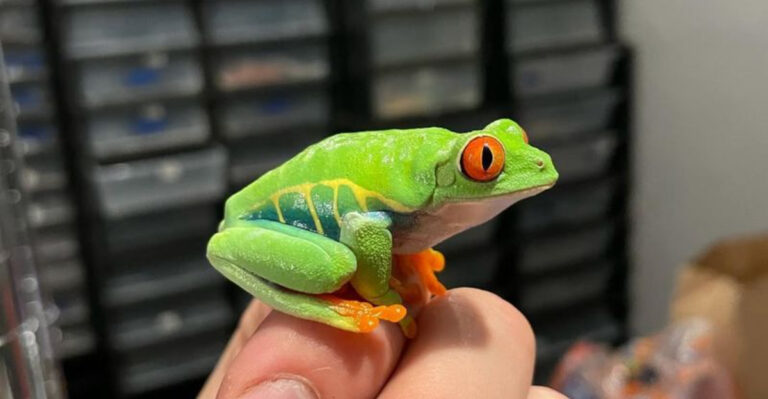This Is Why The Rainbow Shark Is Closer To A Minnow Than A Great White
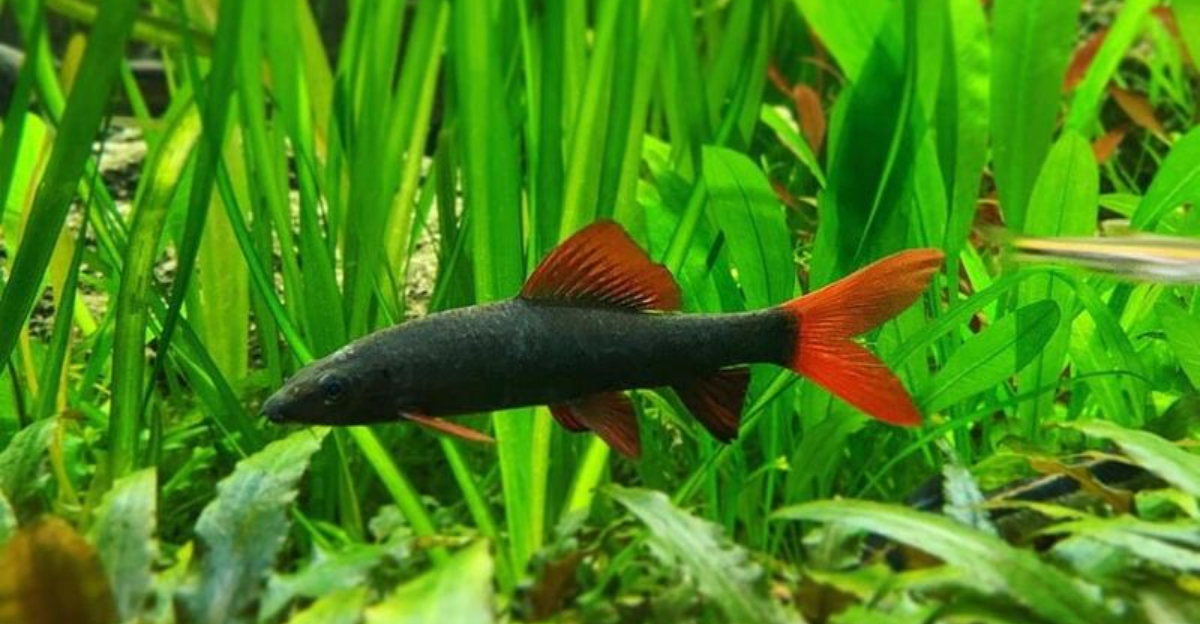
Ever wondered about those vibrant ‘sharks’ swimming in freshwater aquariums? Despite their intimidating name, rainbow sharks share more DNA with the humble minnow than with ocean predators.
These colorful fish might sport a shark-like silhouette, but the similarities end there – they’re actually peaceful algae-eaters from Southeast Asian rivers with fascinating characteristics all their own.
Scientific Classification
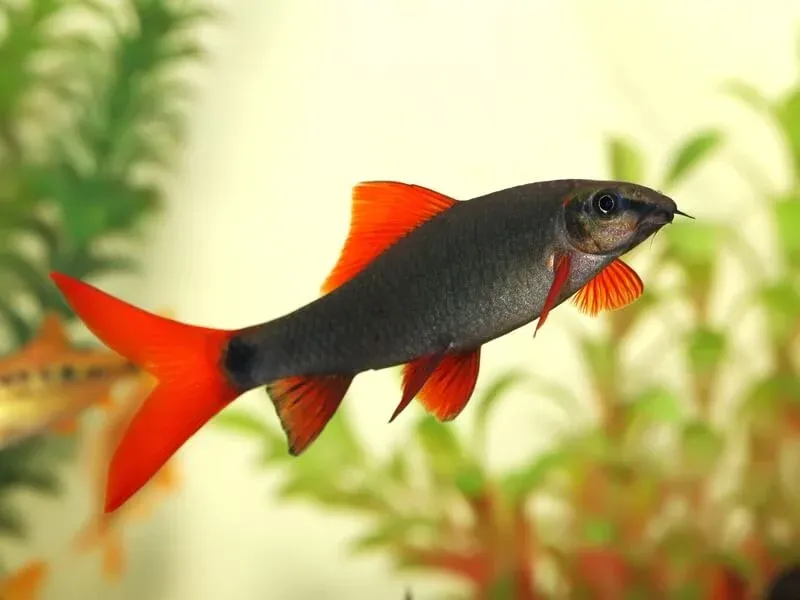
Surprise! Rainbow sharks are imposters in the shark world. These freshwater swimmers belong to the Cyprinidae family alongside goldfish, carp, and yes – minnows.
Their scientific name, Epalzeorhynchos frenatum, reveals nothing shark-related in their lineage. They’re simply distant cousins to the creatures that inspired their misleading moniker.
Physical Resemblance To Sharks
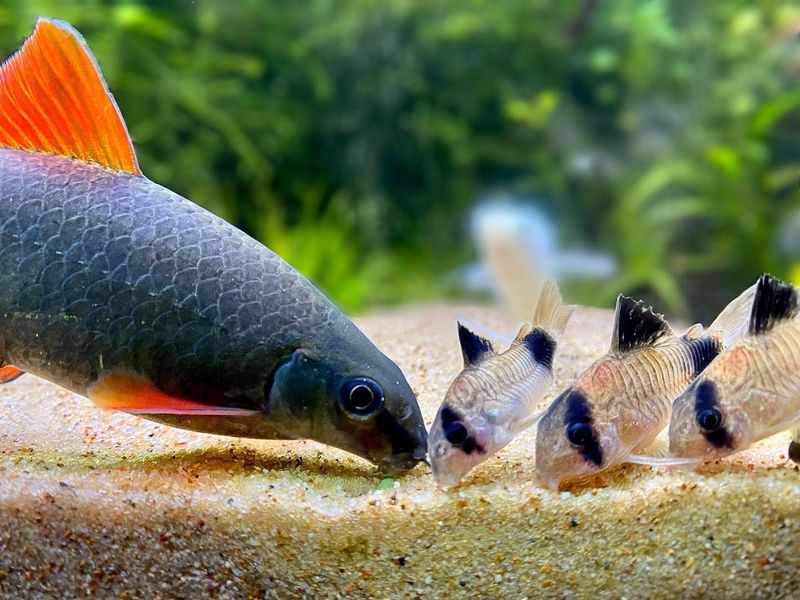
Nature loves a good copycat! Rainbow sharks sport a streamlined body and tall dorsal fin creating an uncanny shark silhouette. Their pointed snout completes the disguise.
This case of convergent evolution gives them predator-like appearances despite their peaceful nature. The resemblance is purely superficial – like how dolphins look like fish but are mammals.
Habitat: Freshwater Rivers Of Southeast Asia
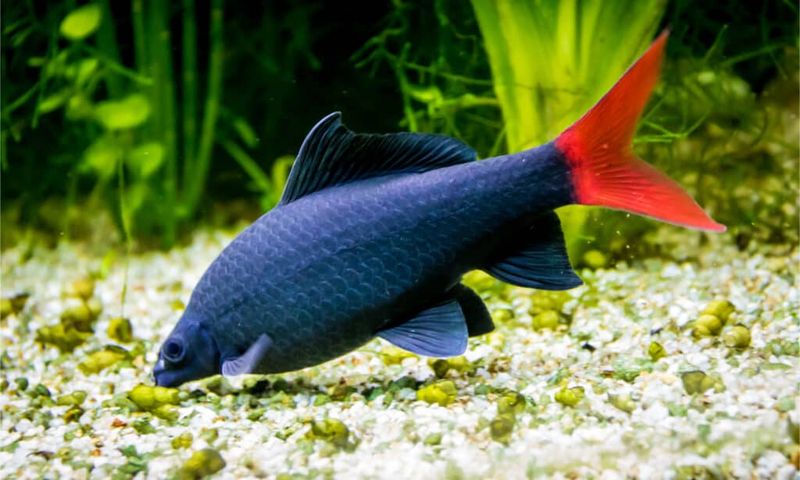
While ocean sharks patrol salty depths, rainbow sharks thrive in freshwater rapids. They call the warm, flowing rivers of Thailand, Laos, and Cambodia home.
Rocky, sandy bottoms provide perfect grazing grounds for these algae-lovers. During monsoon seasons, they adapt to changing water levels with remarkable resilience – something no great white could manage!
Omnivorous Feeding Habits
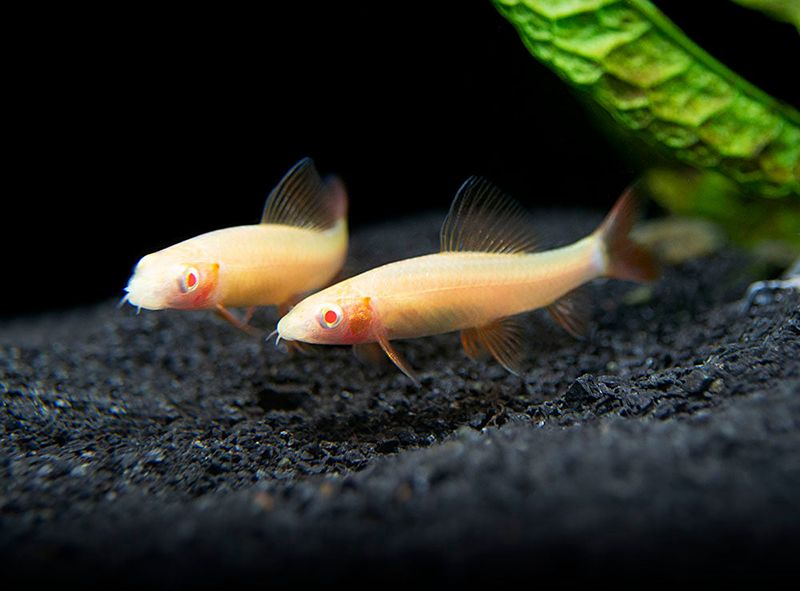
Forget the bloodthirsty reputation of their namesakes! These gentle creatures primarily munch on algae growing on rocks and driftwood.
Their varied menu includes tiny invertebrates, plant matter, and microorganisms. In home aquariums, they happily accept vegetables like blanched zucchini alongside commercial pellets – quite unlike the seal-hunting preferences of great whites!
Territorial And Solitary Nature
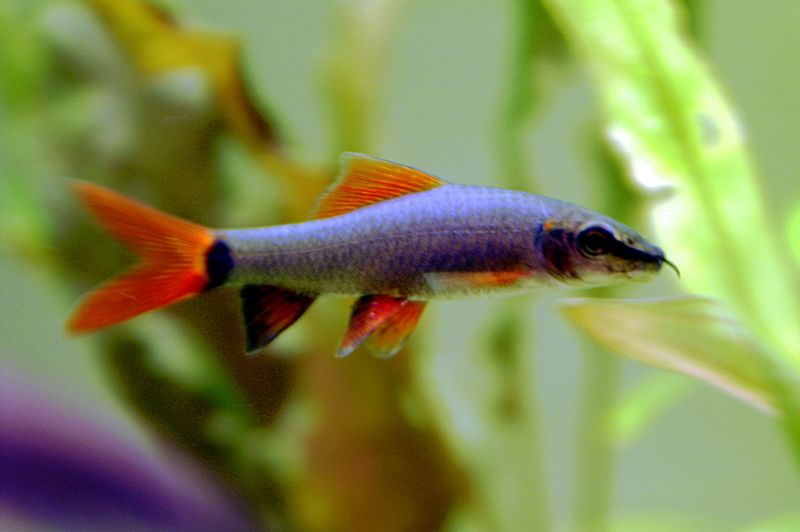
Don’t let their small size fool you! Rainbow sharks pack attitude into their 6-inch frames, fiercely defending their chosen territories against intruders.
They’re the loners of the aquarium world, preferring solitary lives over schooling. When two meet, expect dramatic chasing sequences that would make action movie directors jealous – all bluff with virtually no actual biting.
Egg-Laying Species
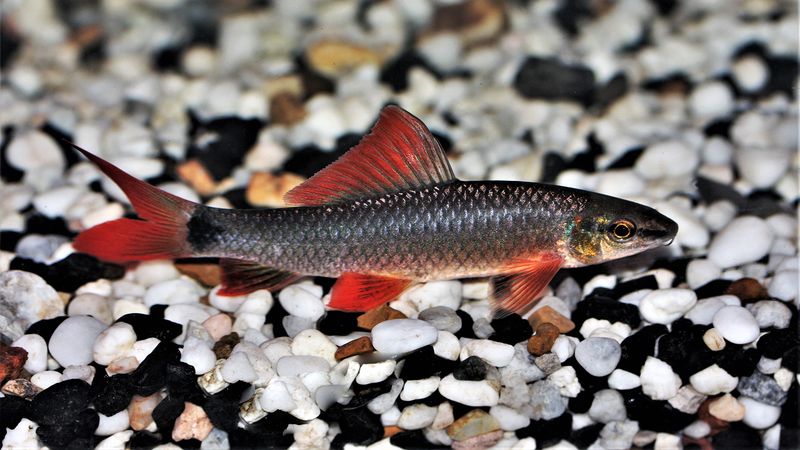
Unlike live-bearing sharks of the ocean, rainbow sharks scatter hundreds of tiny adhesive eggs among plants and rocks. The parents offer zero childcare – it’s survival of the fittest from day one!
Breeding them successfully in home aquariums is rare, earning bragging rights among fish enthusiasts. Their reproductive strategy mirrors that of minnows, further cementing their cyprinid family ties.
Can Live 6 To 8 Years In Captivity
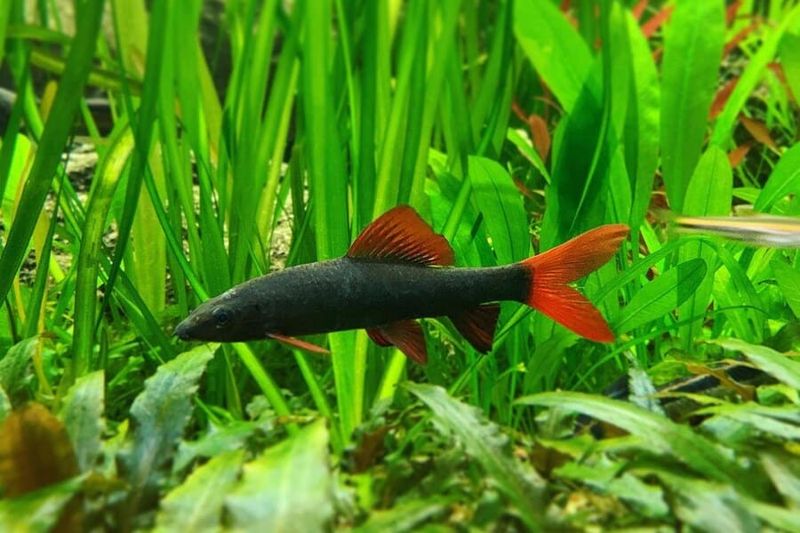
While great whites can cruise oceans for decades, rainbow sharks live brief but colorful lives. Under ideal conditions, these aquatic gems brighten tanks for about 6-8 years.
Their metabolism runs at minnow-speed – fast and furious. Quality water, proper diet, and stress-free environments can maximize their time with us, making every year count in the confined world of an aquarium.
Minimum Tank Size Of 55 Gallons
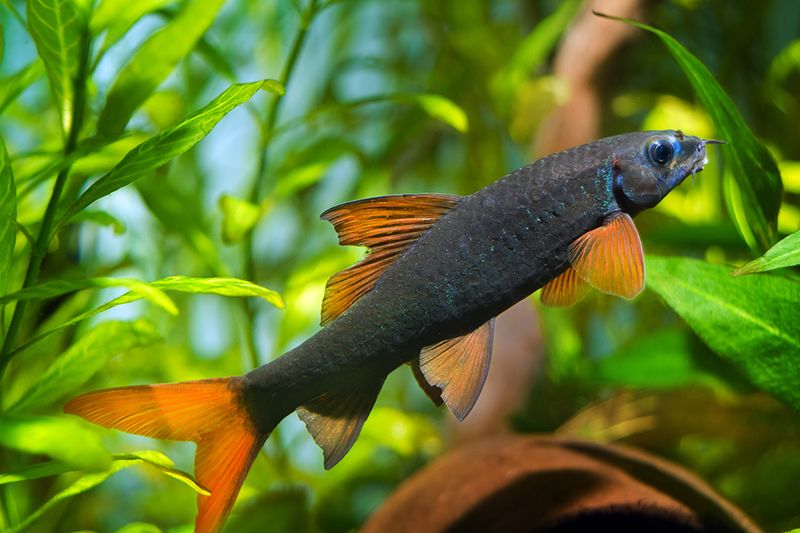
These energetic swimmers need space to patrol! A 55-gallon aquarium minimum provides the territory they crave, preventing stress-induced behaviors.
Strong filtration mimics their native river currents. Caves, driftwood, and rocky hideaways create natural boundaries for these bottom-dwellers, satisfying their instinctual need for security while allowing their vibrant colors to truly shine.
Best Kept Alone Or with Non-Competing Species
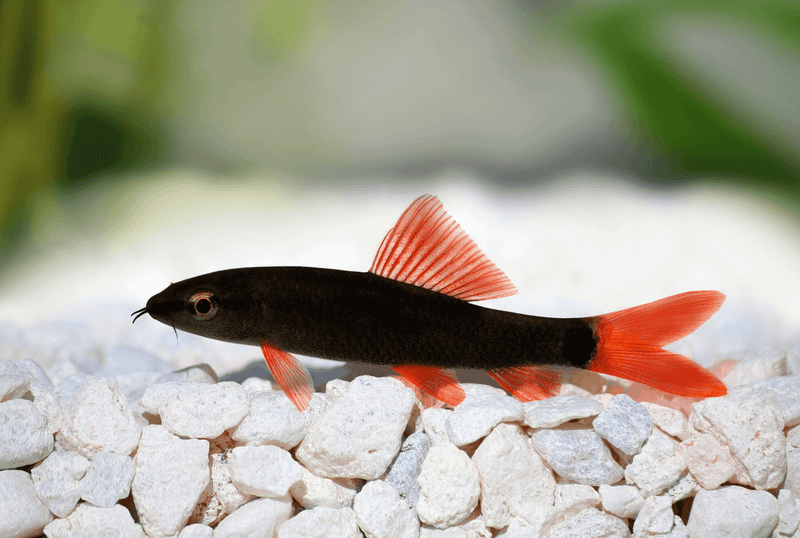
Playing matchmaker for rainbow sharks requires strategy! These feisty characters clash with their own kind and any fish resembling them.
Upper-water swimmers like danios or tetras make ideal tankmates. The trick is vertical zoning – rainbow sharks patrol the bottom while other species occupy middle and top waters, creating peaceful coexistence through natural space division.
Standard And Albino Color Variations
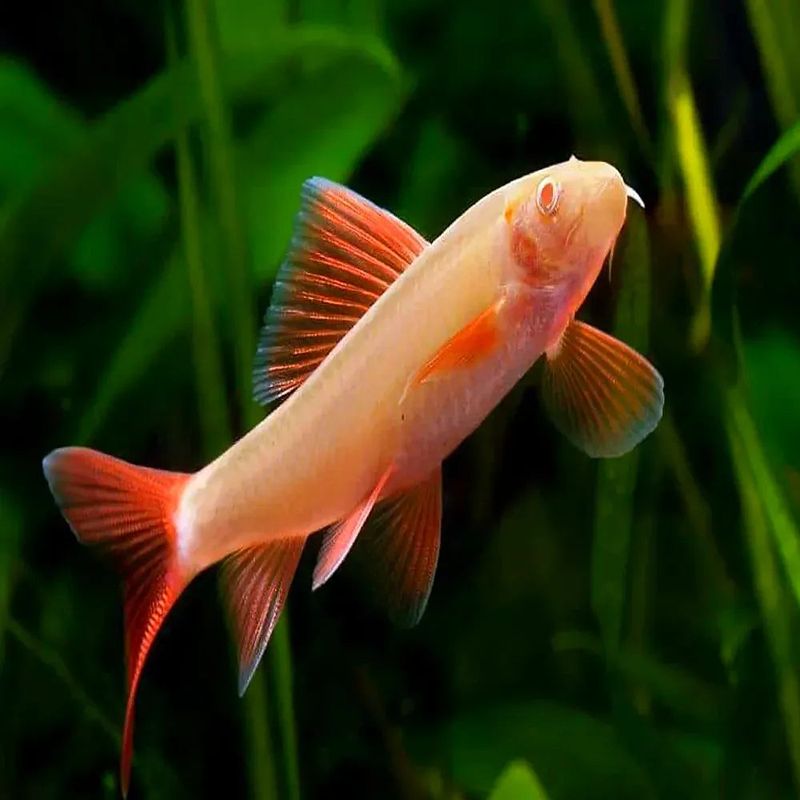
Mother Nature’s palette for rainbow sharks is surprisingly limited despite their colorful name. The classic version sports a velvety charcoal body with brilliant red-orange fins – striking but hardly rainbow-like!
Selective breeding has produced stunning albino variants with snow-white bodies and fiery fins. Both forms maintain that shark-like silhouette while flaunting colors no ocean predator would dare wear.
Misleading Common Name
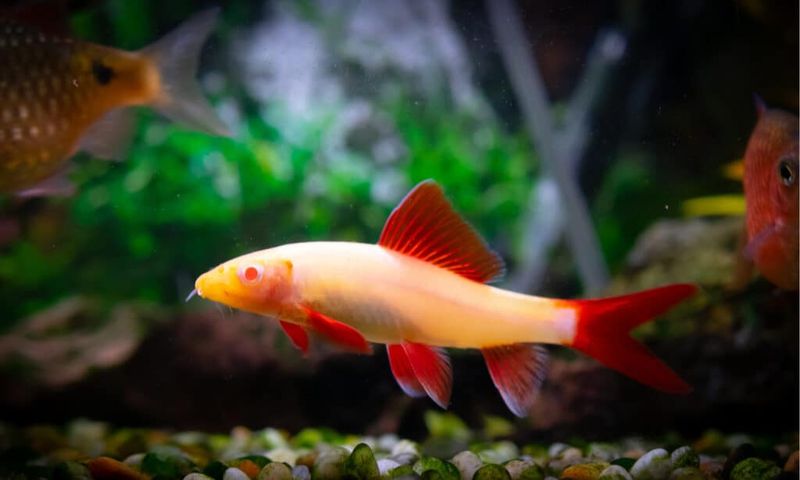
Marketing genius or honest mistake? The “rainbow shark” name combines two inaccuracies in just two words! These fish display exactly two colors (not a rainbow) and share zero genetic relationship with sharks.
Their Thai name “Pla Kang Hua Jut” more accurately describes them as “spiky-headed fish.” Pet stores worldwide continue using the catchier misnomer because, let’s face it, “minnow with attitude” doesn’t sell as well!
Conservation Status: Least Concern
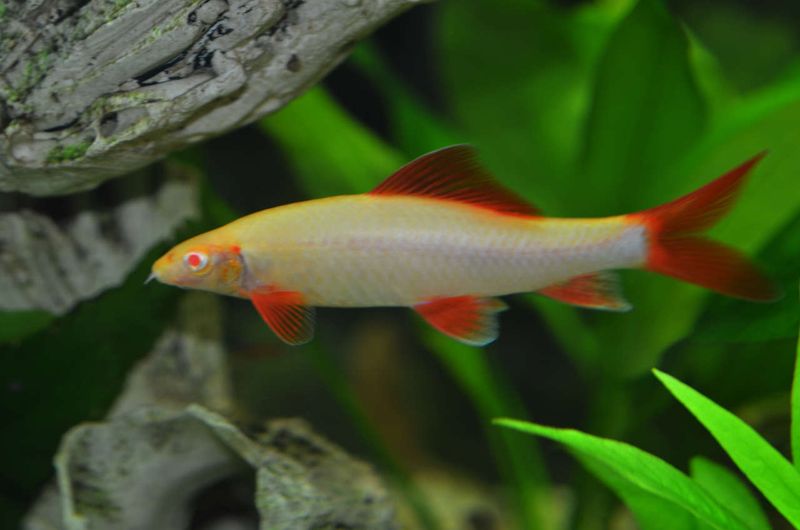
Wild rainbow sharks face mounting threats despite their “Least Concern” conservation status. Dam construction throughout Southeast Asia disrupts their native river habitats, blocking migration routes.
Widespread aquarium breeding has created a strange paradox – they’re vanishing from nature while thriving in captivity. Agricultural runoff and deforestation further challenge wild populations, making each passing year more precarious for these river dwellers.
Genetic Modification (Glow-In-The-Dark Variant)
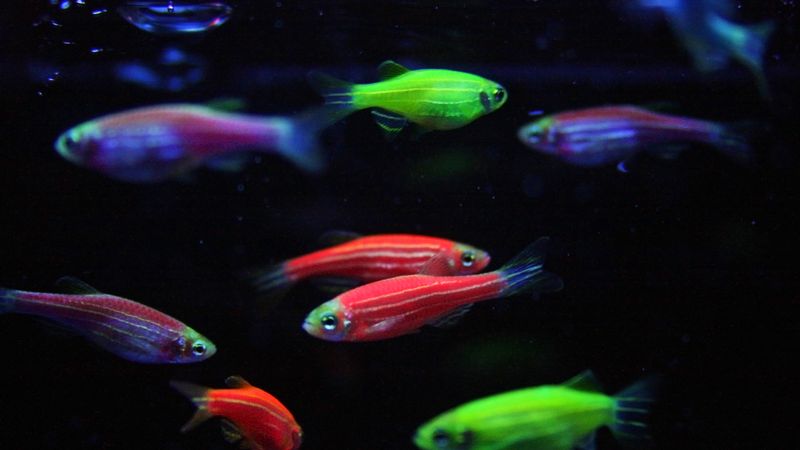
These modified fish contain jellyfish genes that make them fluoresce under blue light, creating an eerie, neon glow.
The ethical debate rages on. Are they fascinating innovations or concerning examples of genetic tinkering? Either way, these modified versions swim even further from their shark namesakes and deeper into human-influenced evolution.


